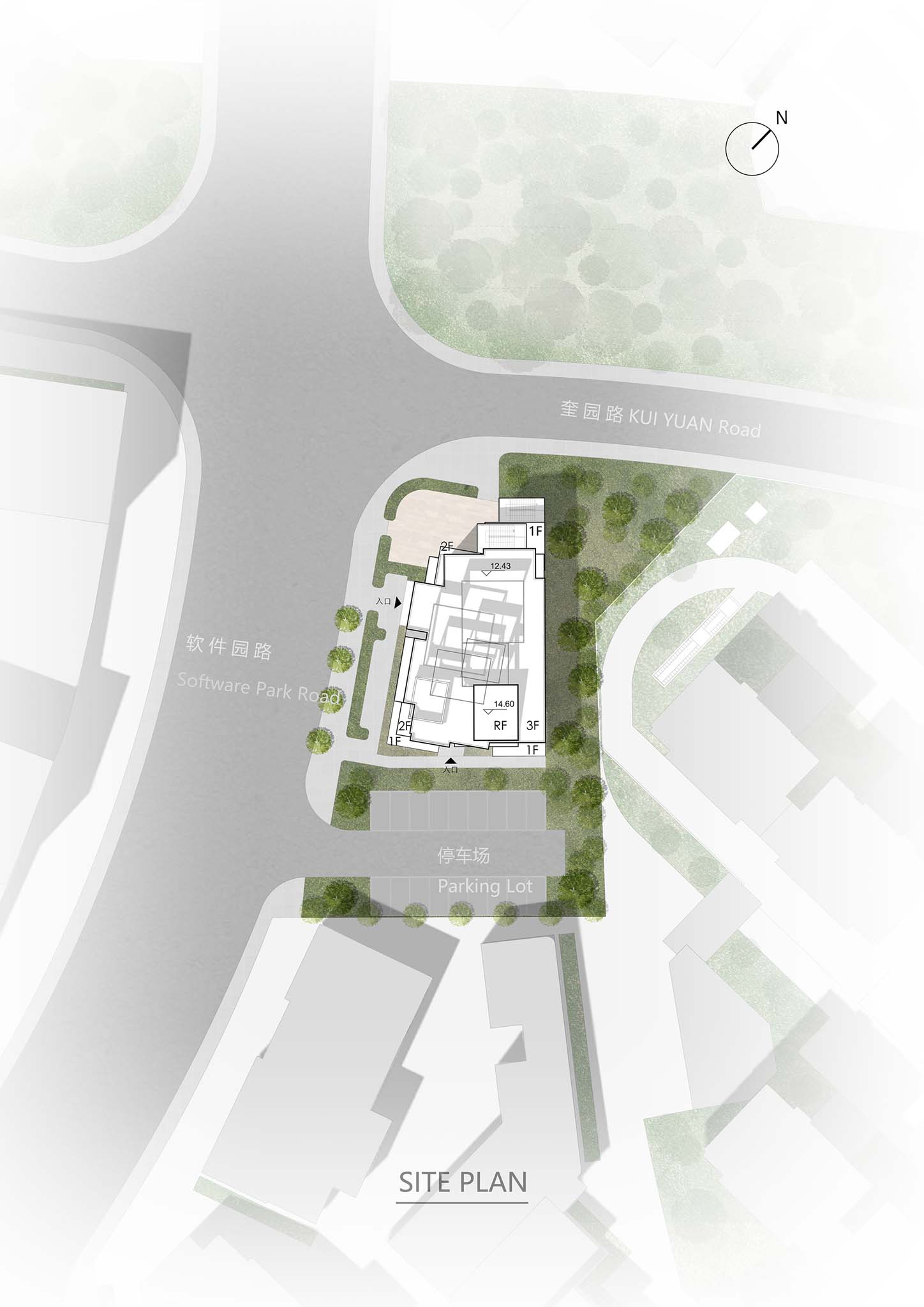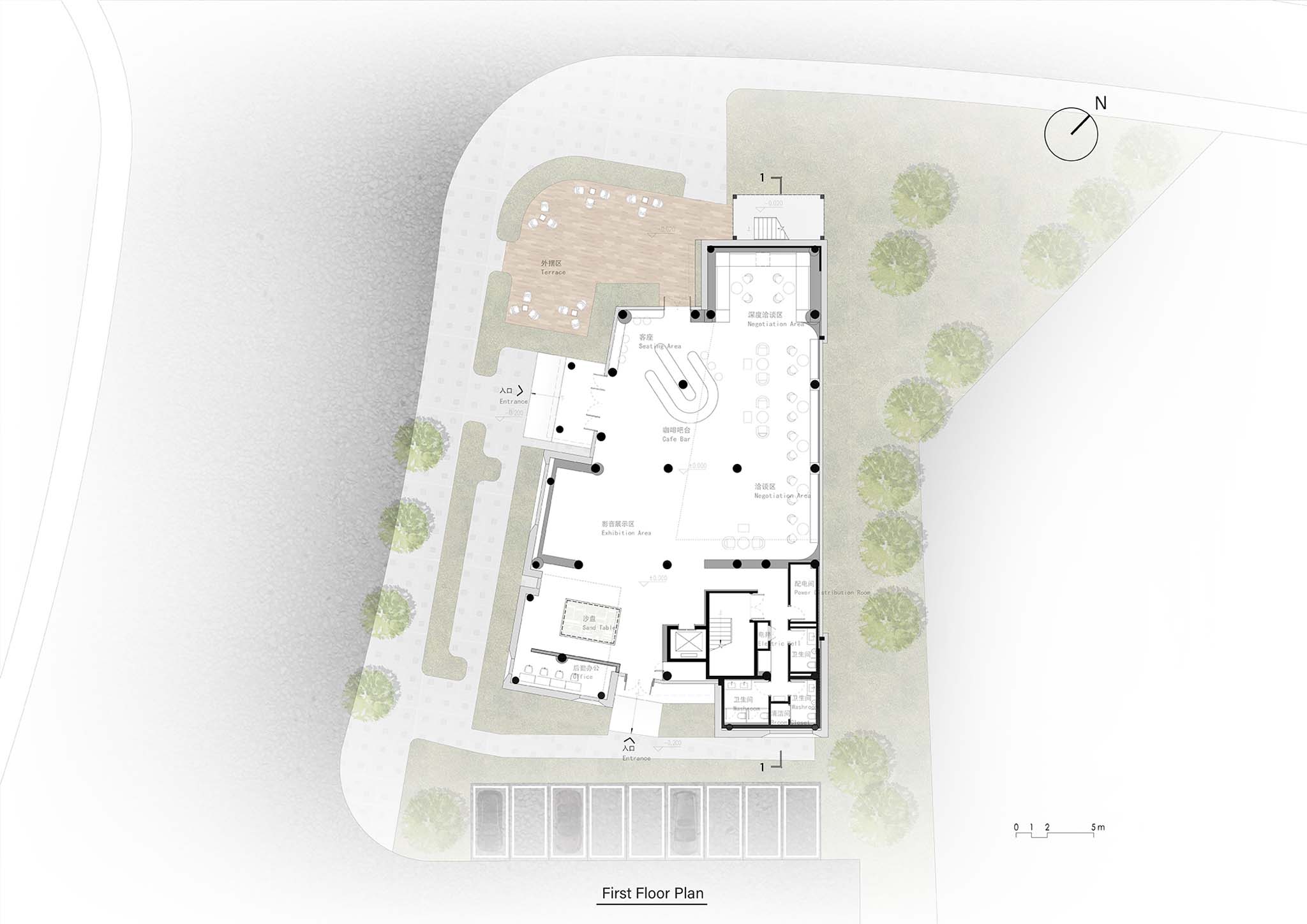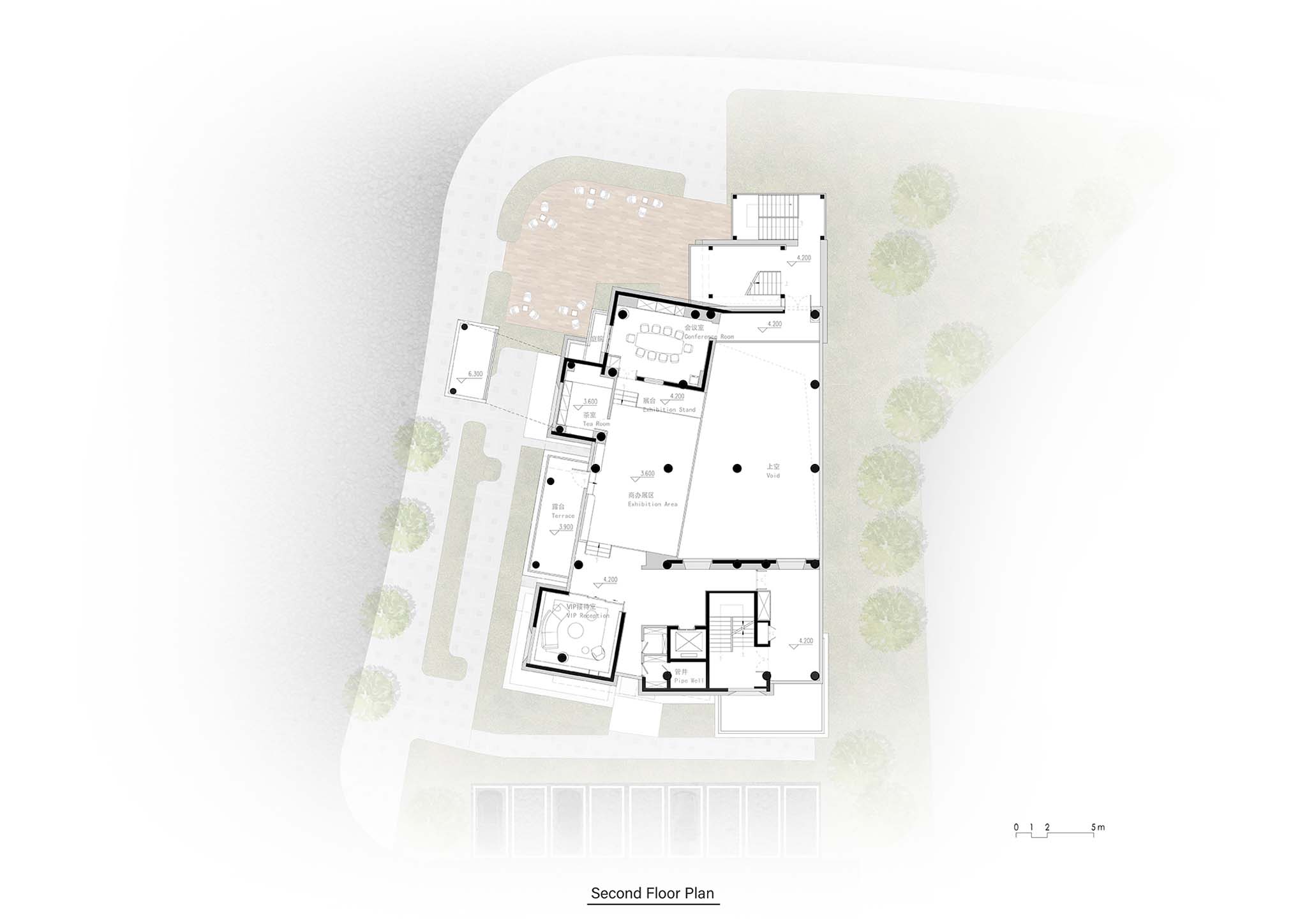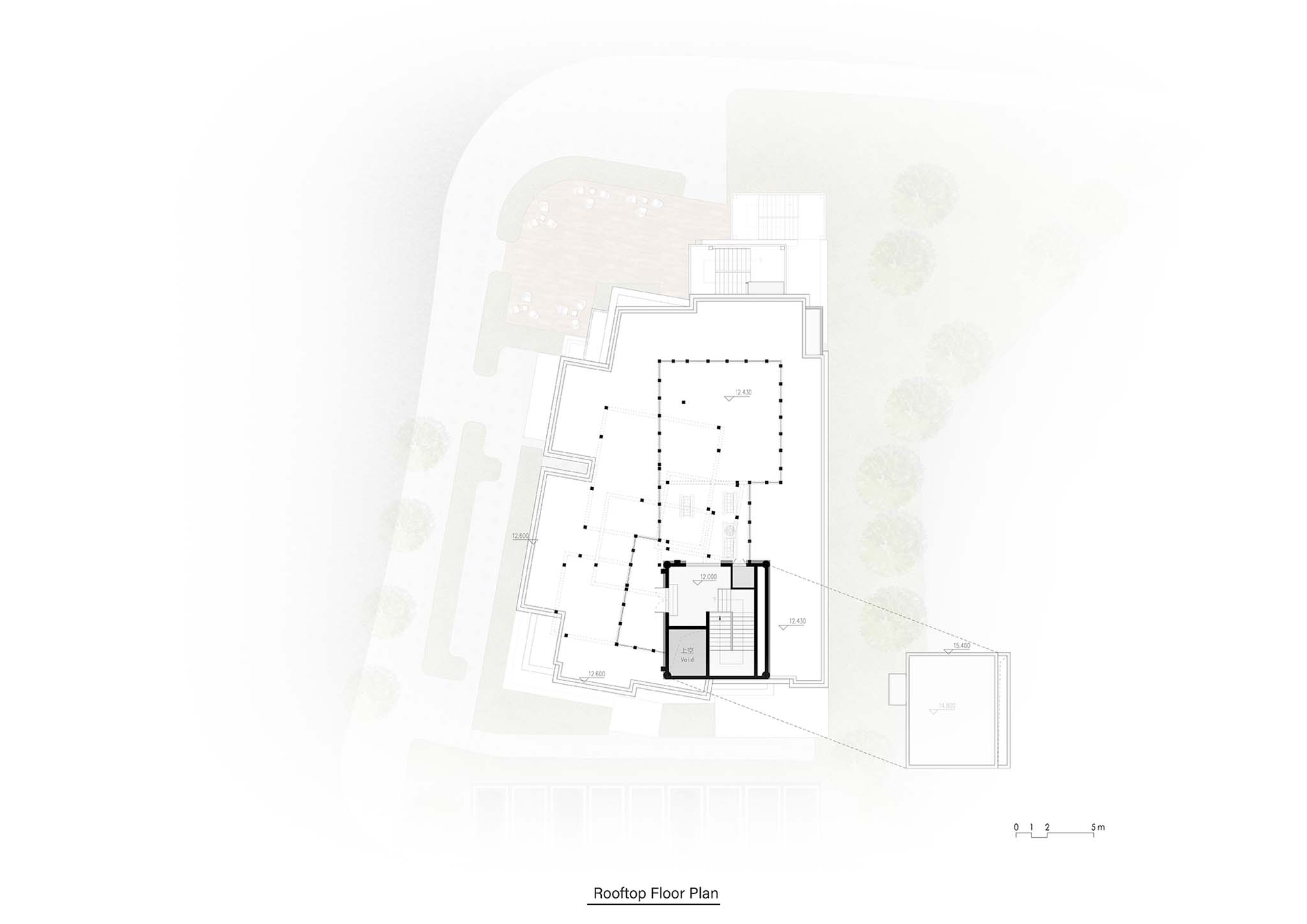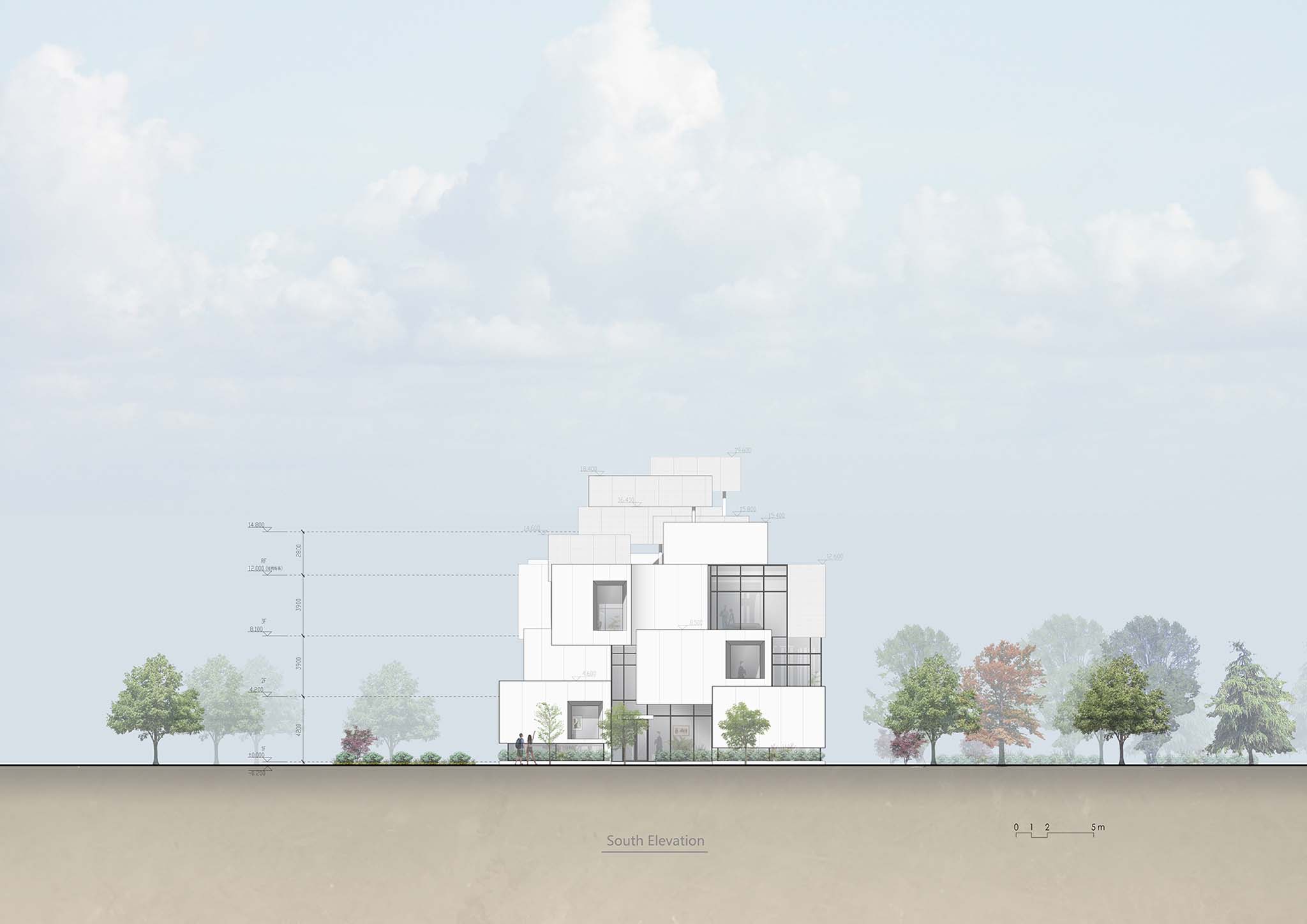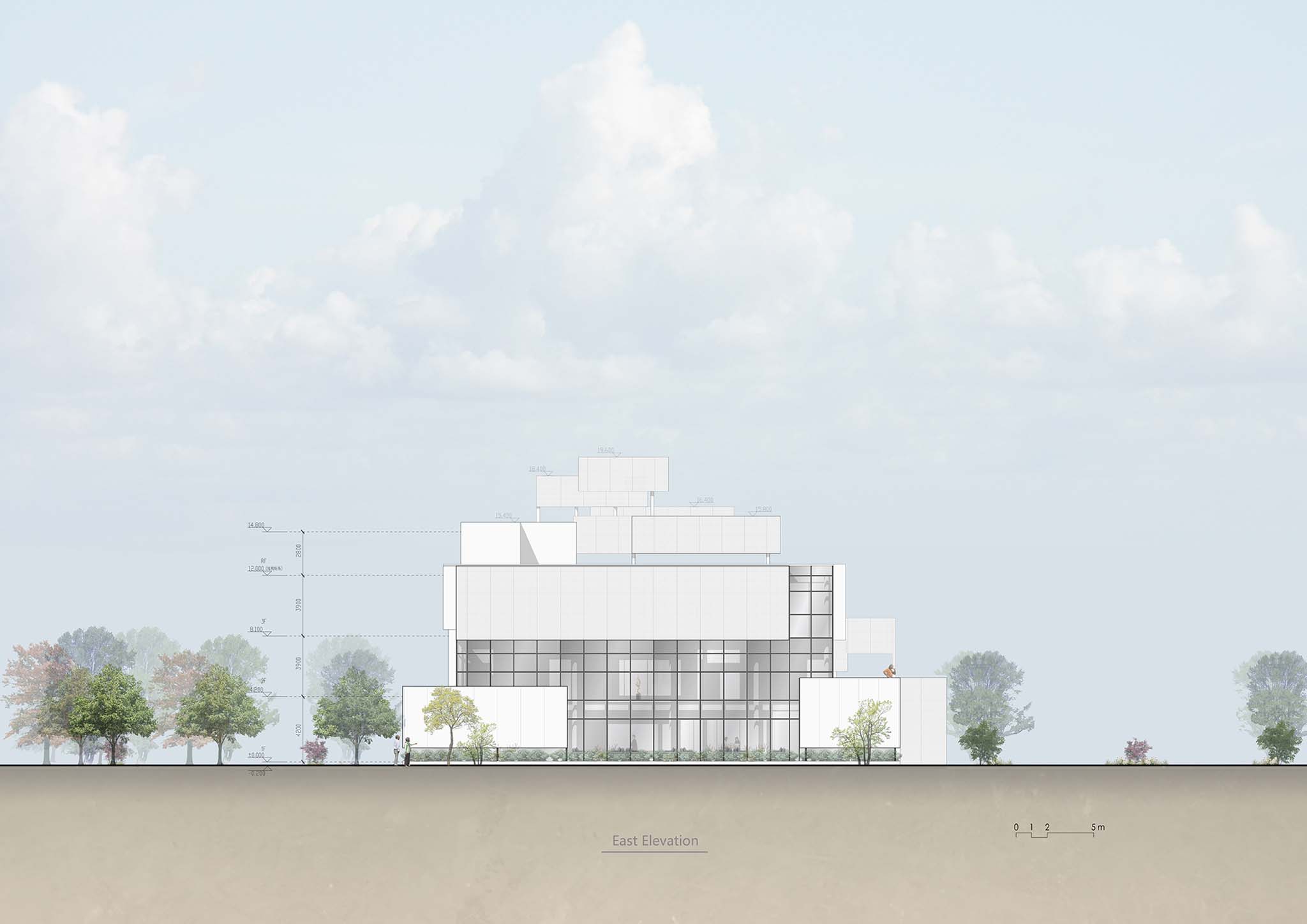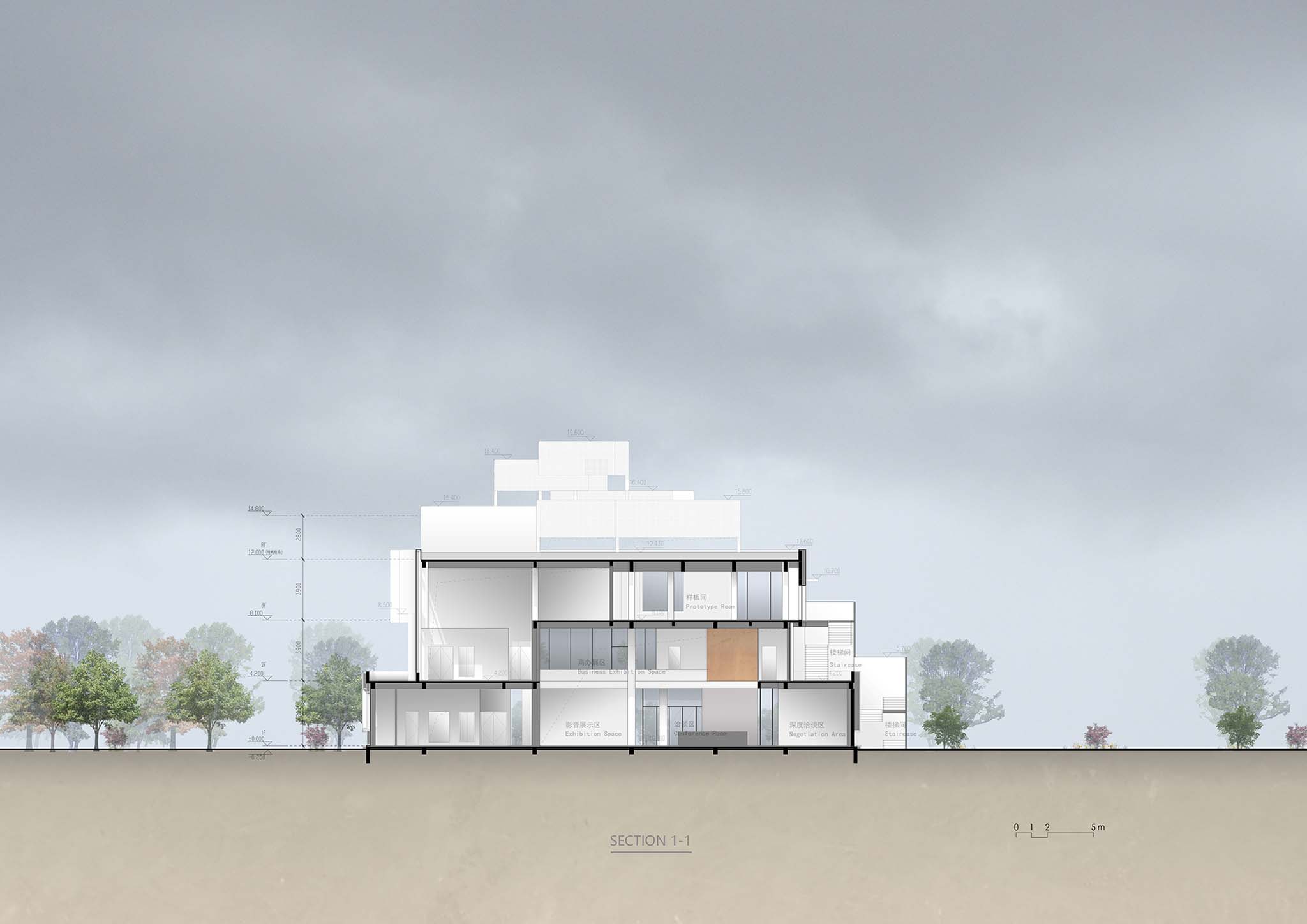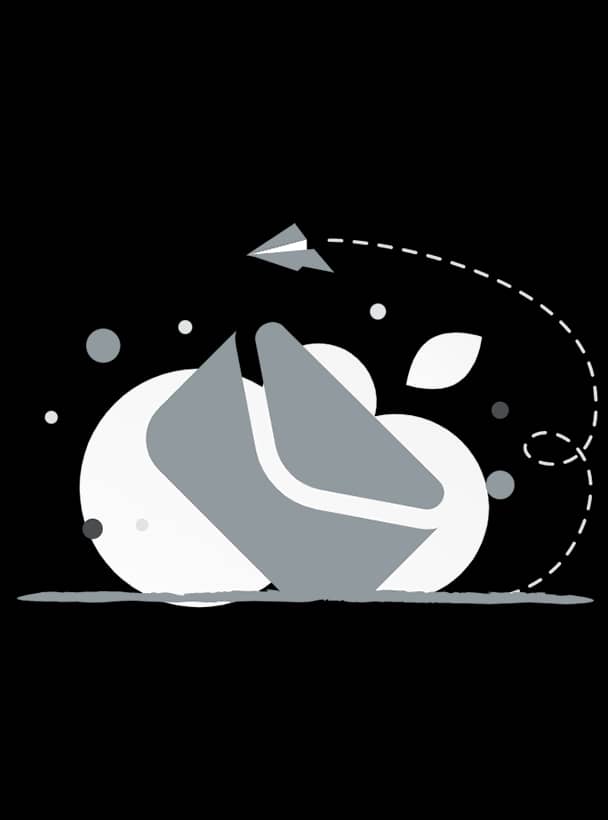Project Credits & Specs:
- Architects: Wutopia Lab
- Photographs: Liang Junhao
- Location: Software Park Road, Quanshan District, Xuzhou City, Jiangsu Province, China
- Area: 1,169 m2
- Year: 2021

Project Description
Stages
When I received the call inviting me to design, I was in the mountains on a land grant. In the intermittent signals, I learned that the land was on the border between the old and new city in the northernmost city of Jiangsu. The client hoped that I could create a different kind of demonstration center at the narrow junction.
Counting the grand history of a city is a cliché for architects. For example, the hometown of Liu Bang, the birthplace of Han culture, a major transportation hub, a coal mining and energy base, and the decisive Huaihai Battle. But these narratives cannot conceal the loss and anxiety of the city and blur the concrete lives and joys and sorrows of ordinary people.
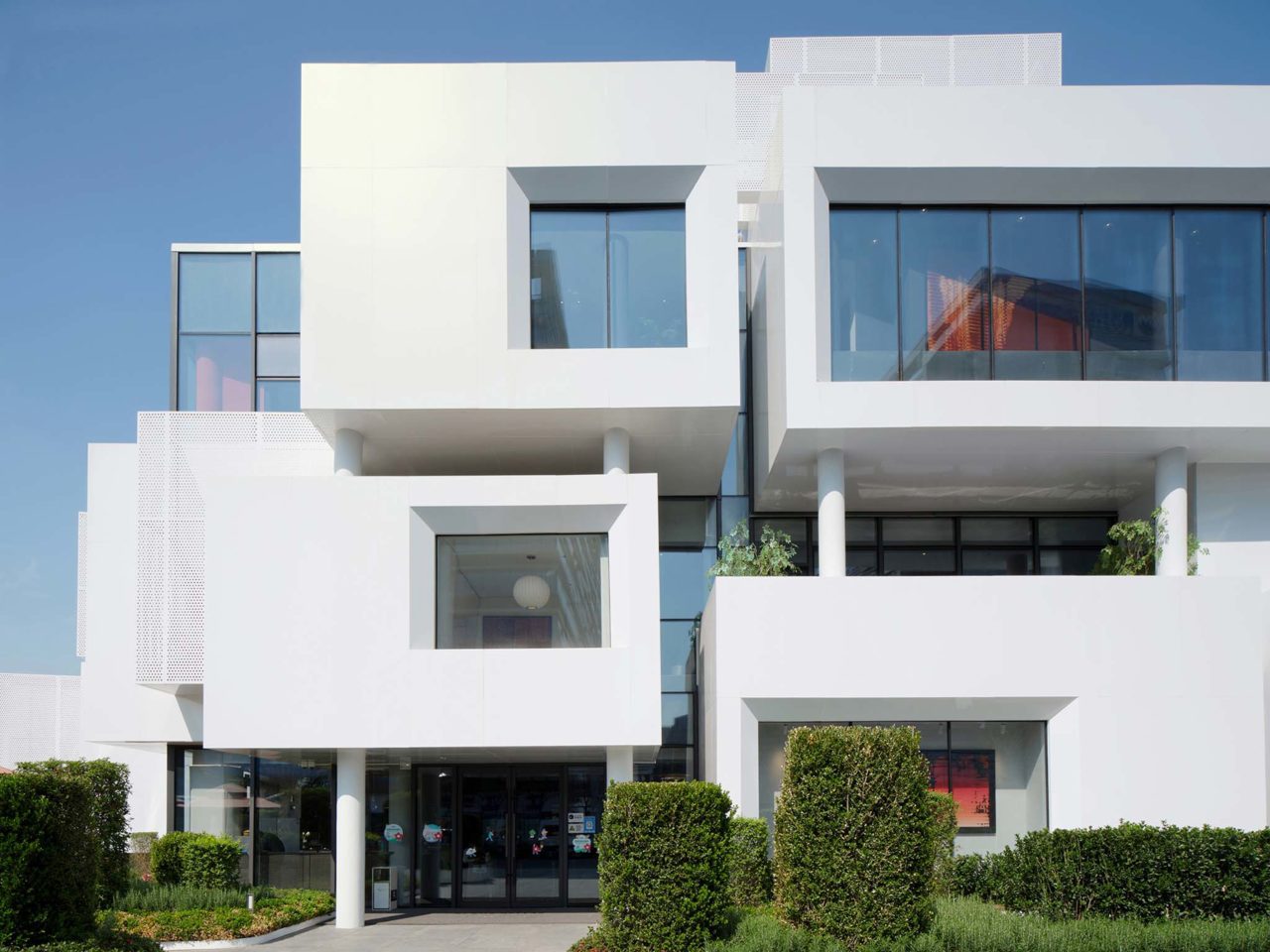
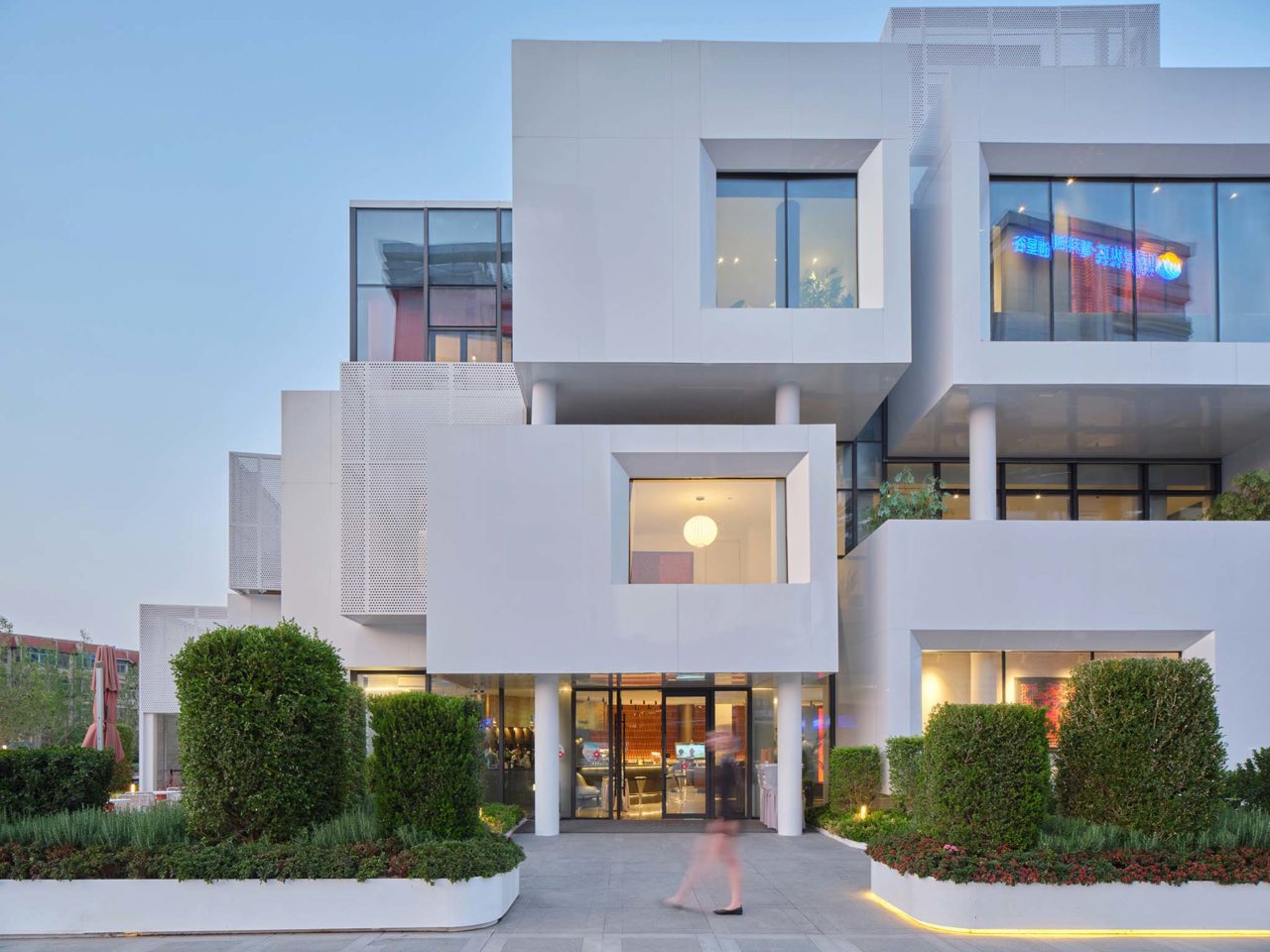
During the Quarantine when we didn’t have any connection, I had a quick thought. I wanted to design a building on this border that could show the different living conditions of ordinary people. You can see different ordinary people showing their scenes of lives in a street of daily banal, without grand narrative. Each scene is a stage in a play. The architecture is constituted by those stages, which becomes a theater, where any ordinary person can be can perform in. It is not the ambition of the city that matters, but the home-grown highlights that one is satisfied with and willing to share. In which some cities are not a must but a matter of fit or not, especially in the age of smartphones, everyone can express themselves across the constraints of geographical distance.

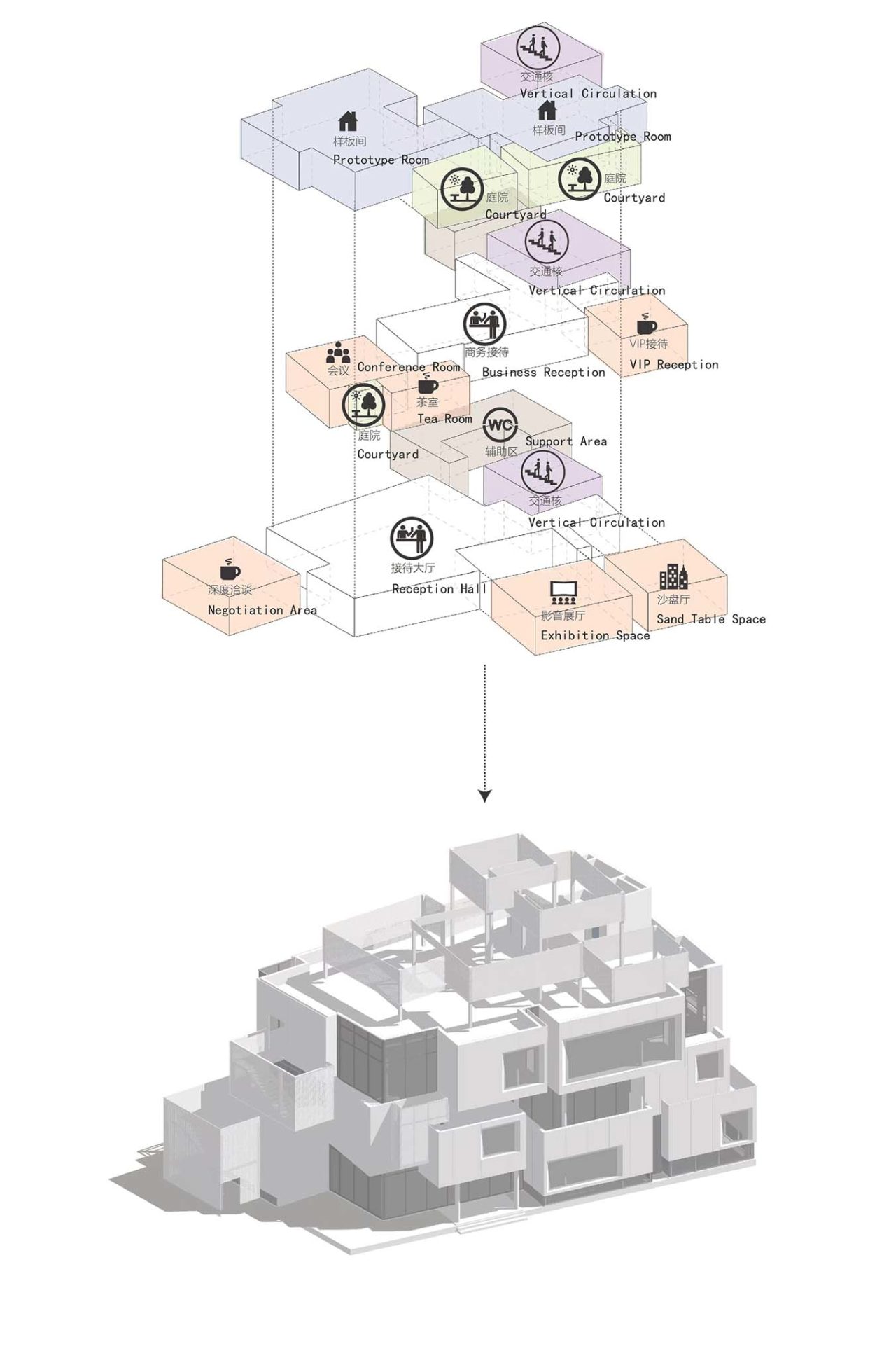
After the signal was restored, I told Sun, who oversaw the design team, that I wanted to create a set of stages on the border of the old and new city, with ordinary people as the main characters. The performance is about their own lives in all aspects. And he said yes.
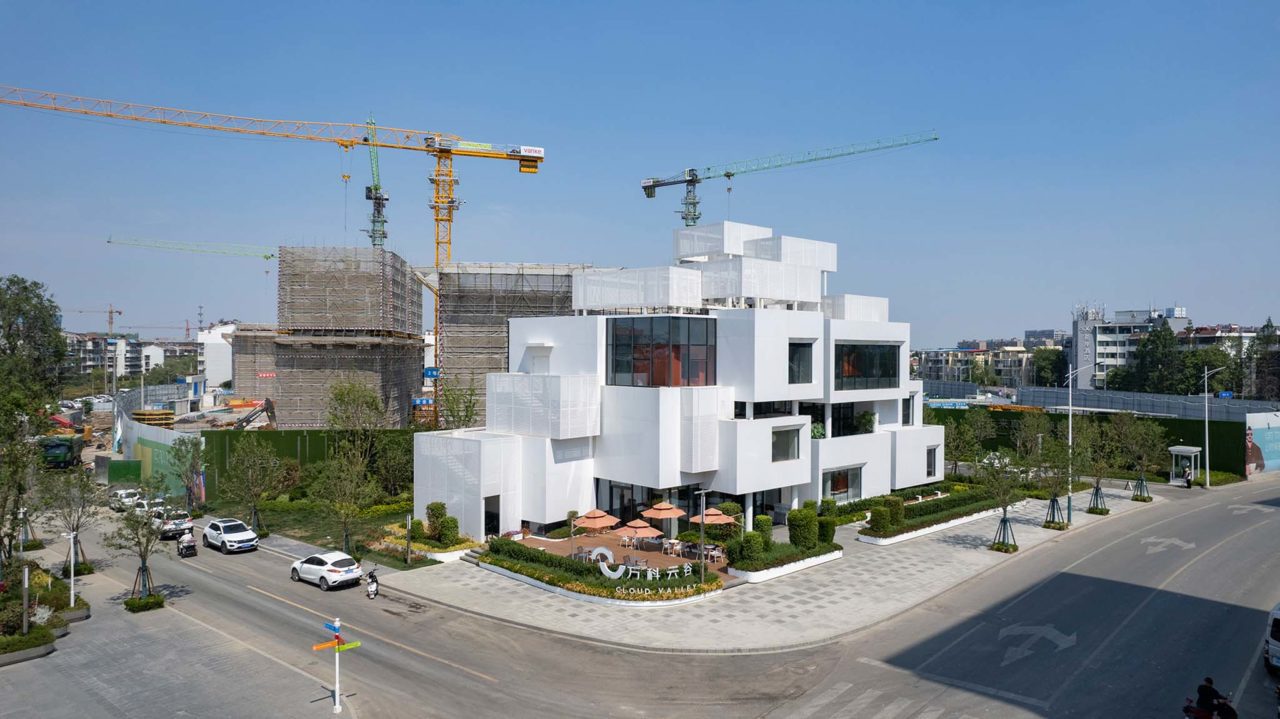
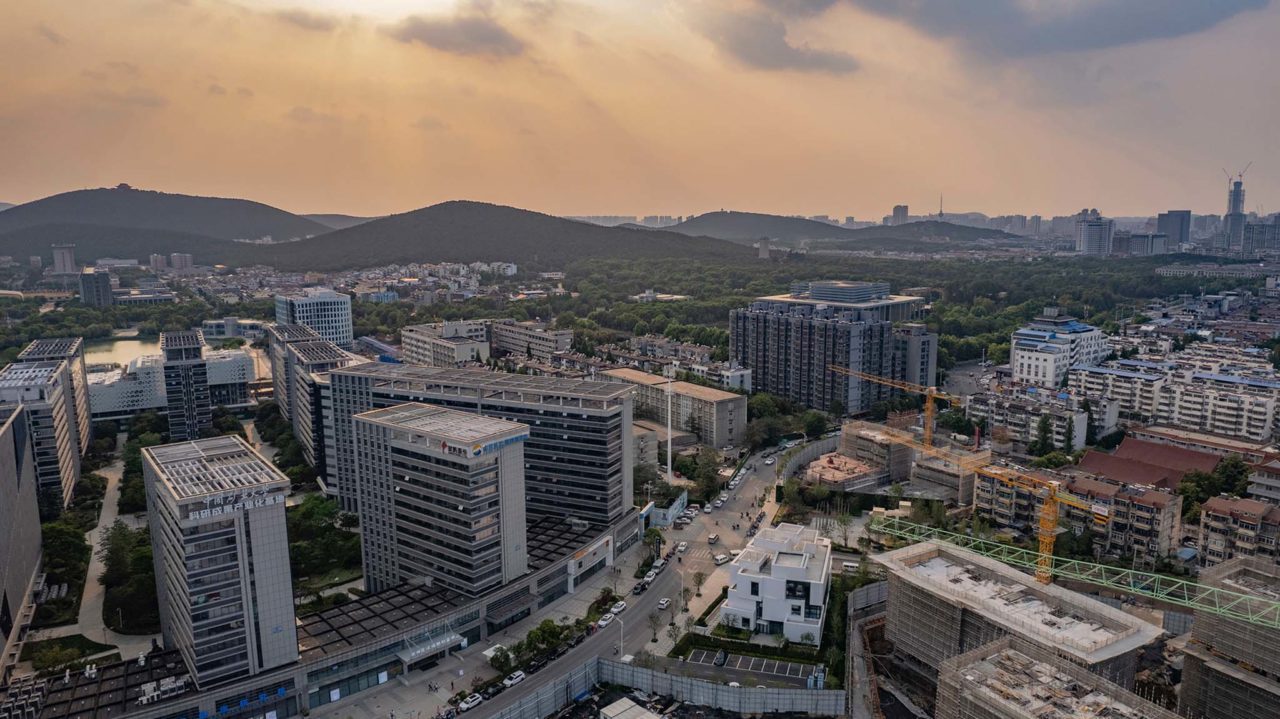
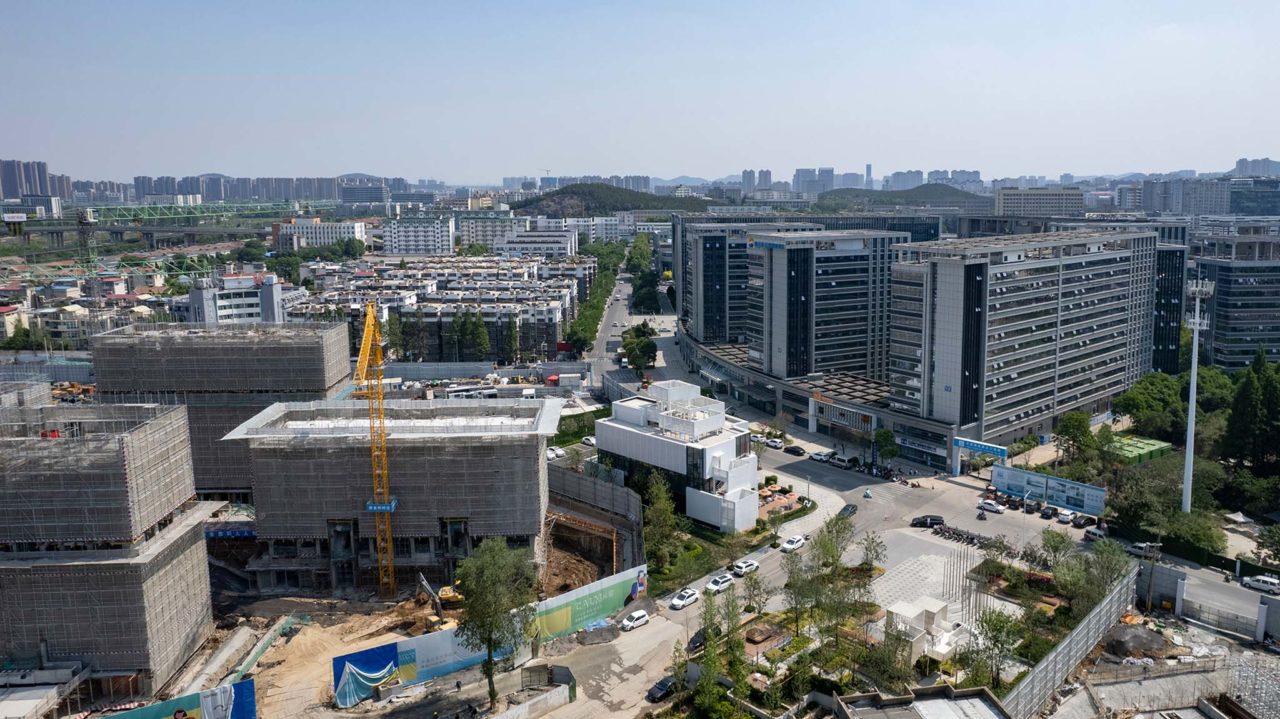
Hills
Although the site is a prototype city, the actual buildable land restrictions are very high. After meeting various planning and fire-proof conditions, the narrow trapezoidal building site within the building setback line is about 500 square meters, and the height limit of the structure cannot exceed three floors. The total construction area of the prototype, including two sets of sample houses, is only more than 1000 square meters. This small demonstration area center actually has no extra floor space as a stage for people to perform.
It would never be my choice to drape a façade over a functional layout interior. When function and façade are not disconnected, the design of the façade becomes irrelevant. In the end, one fails to provide different solutions for the client until the physical strength and patience of both parties are exhausted. Despite that, we insisted on turning it into a stage.
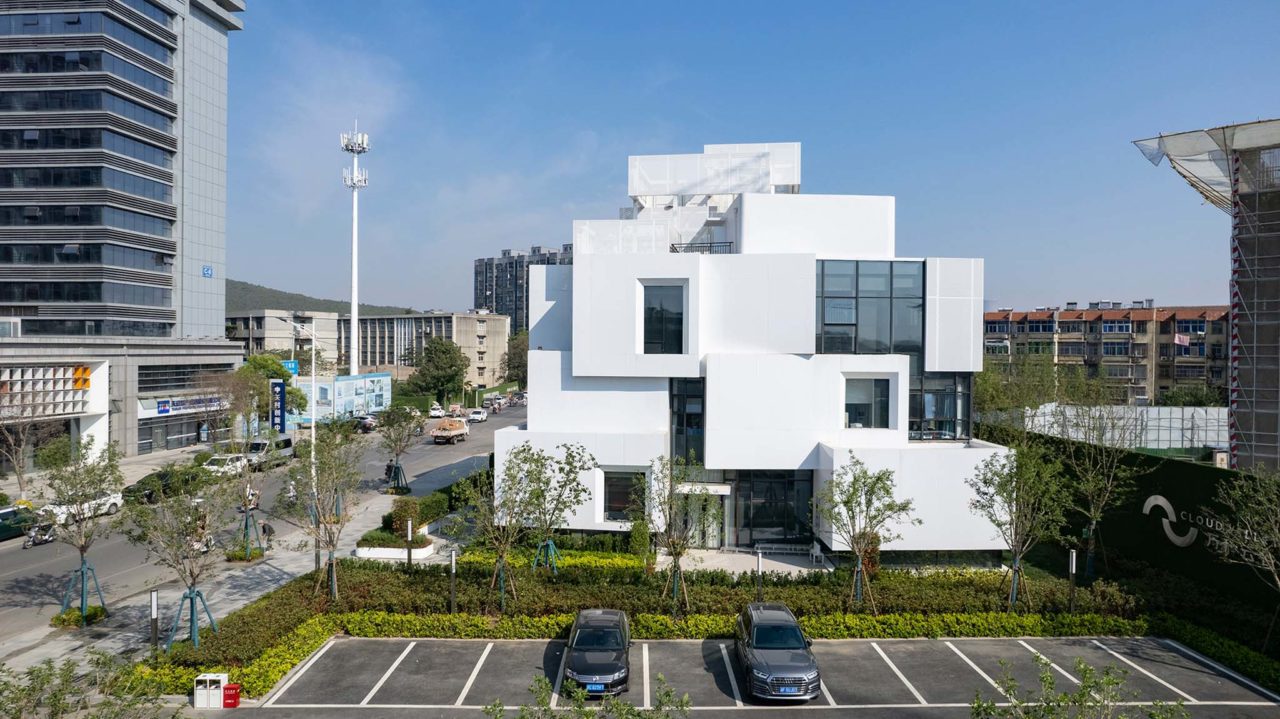
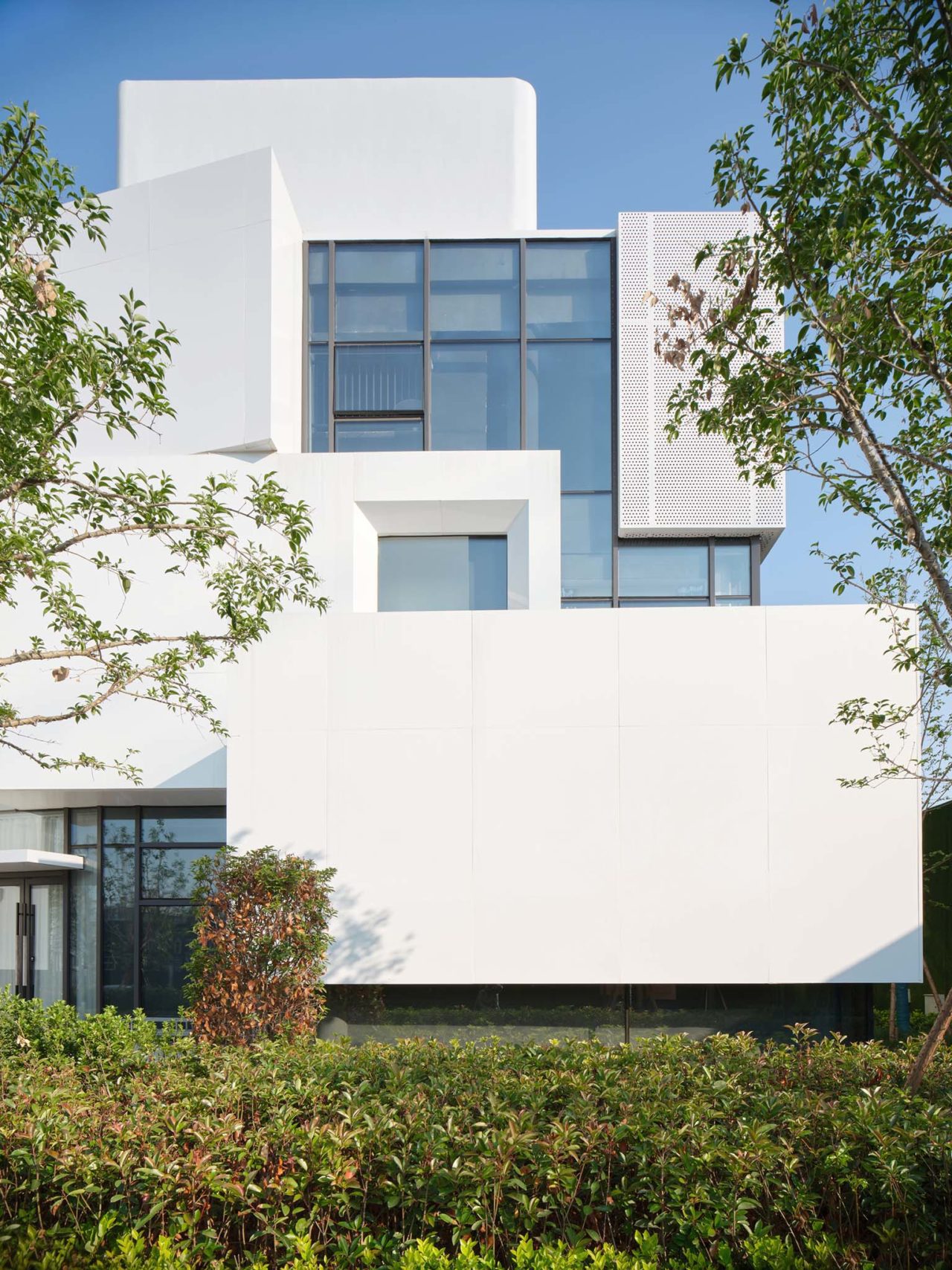
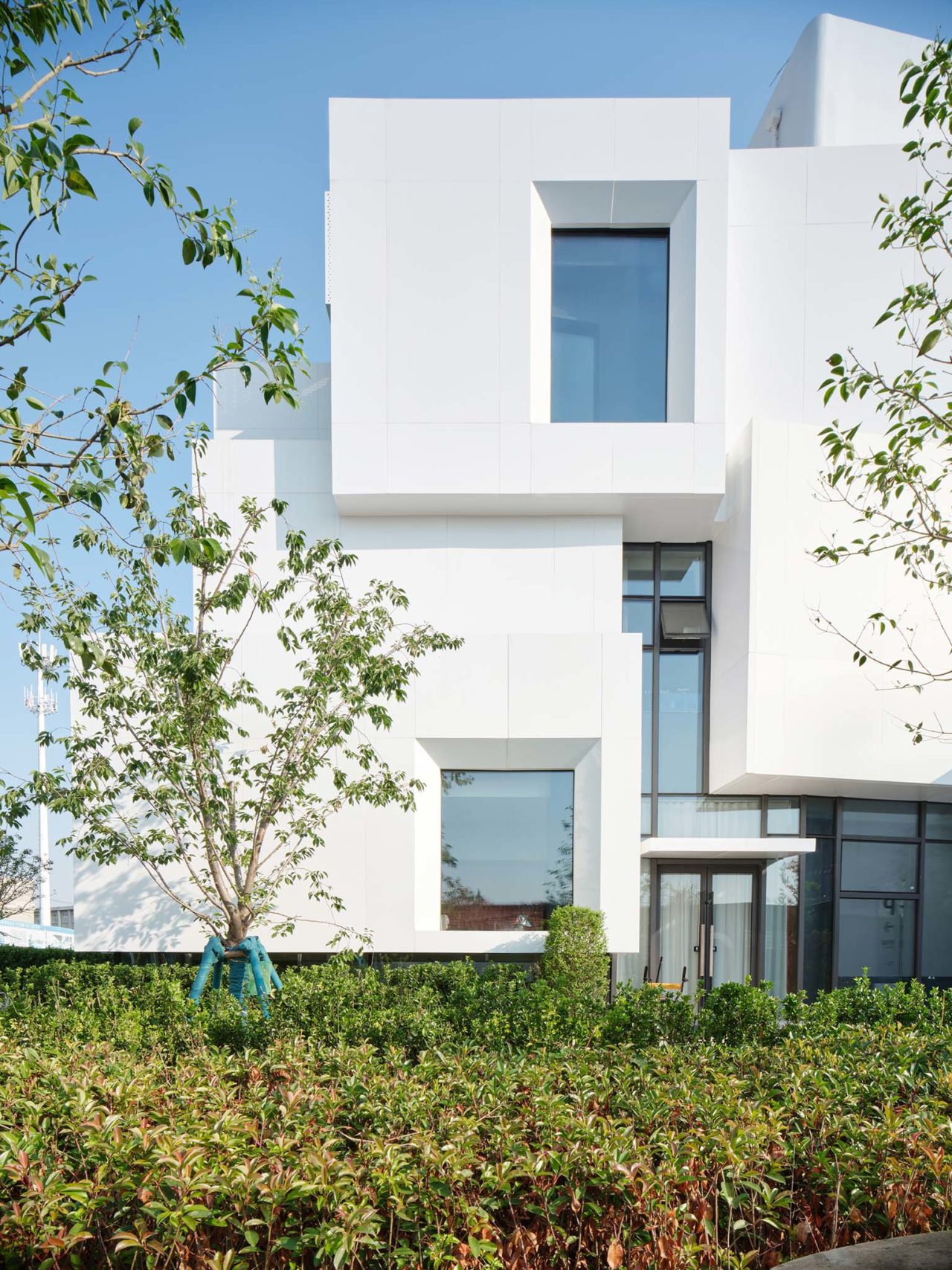
We re-analyzed the programs and circulations of Vanke’s sales center and categorized them differently. We merged the core and communal space and defined it as a big “noisy” space that flows through three floors. And the audio-visual hall, sandbox area, office, model room, tearoom, coffee, meeting, negotiation, signing, VIP reception, indoor garden, and other rooms are independent as “quiet” small boxed-shape plug-ins attached to the big space according to the flow line in turn. You can recognize these stacked boxes on the façade and see part of the flowing “noise” in the gaps of the boxes.
The plug-ins have large windows or balconies in reference to the stage. A set of side stages that do not occupy floor space appears on the façade. The box on the façade is no longer just a box, but a scene that shows “a scene from daily life”. Different stages show identical daily lives of each individual. When they are stacked together, the demonstration area becomes a monument to the daily life of ordinary people.
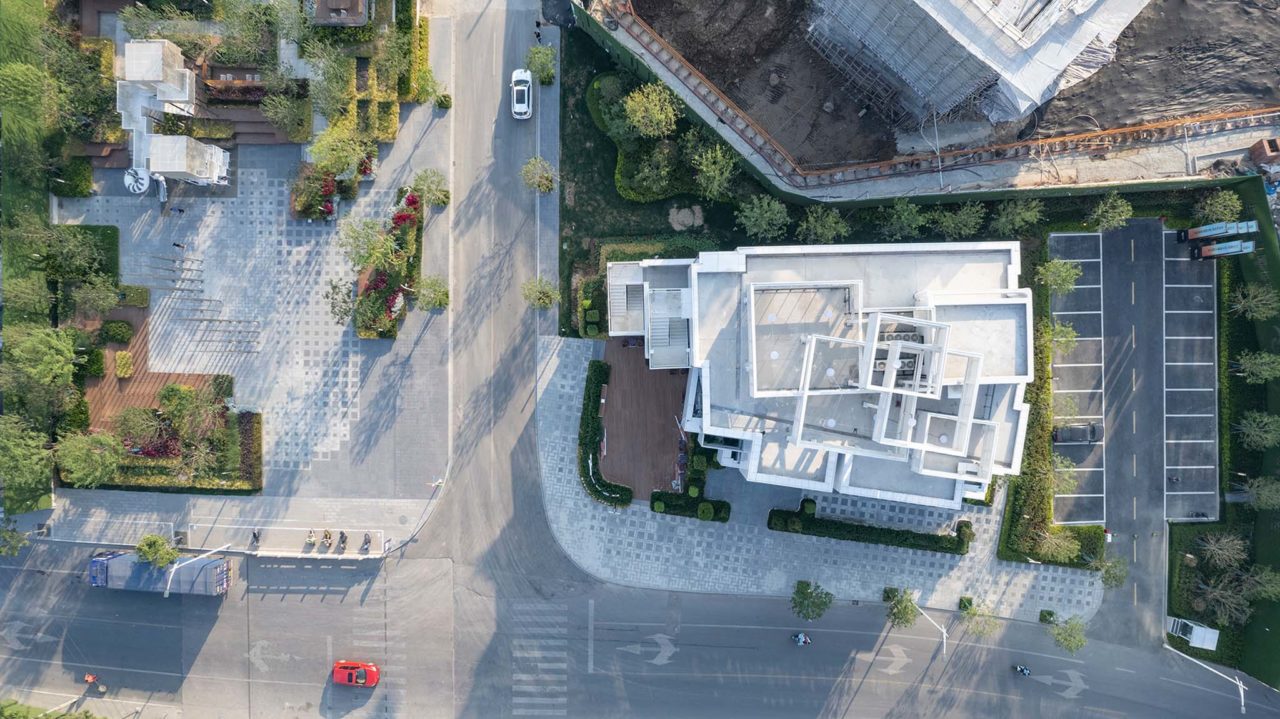
When we were investigating the site, Xia Xia noticed a line of mountains that appeared steeply in the distance of the normally unrecognizable interface. This unexpectedly concrete and natural green mountain became the inspiration of our design, and we piled up an abstract artificial white mountain as the image of Vanke Cloud Valley demonstration area by flowing boxes.
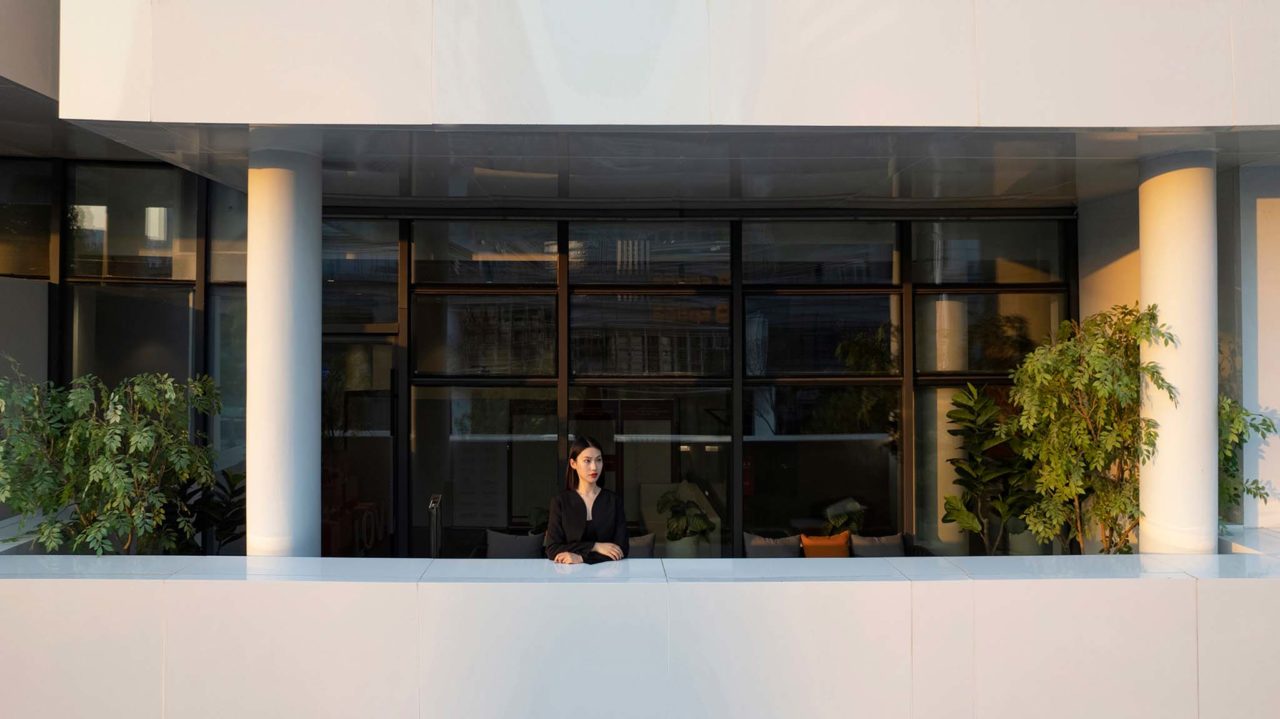
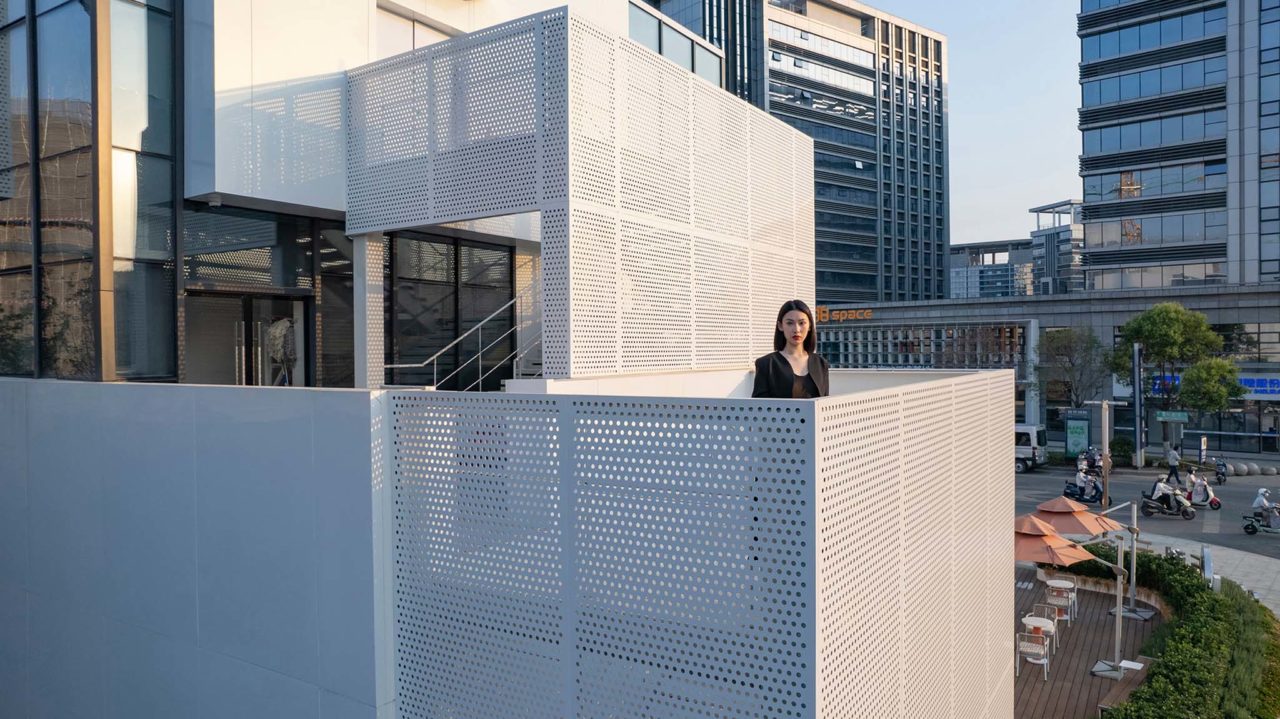

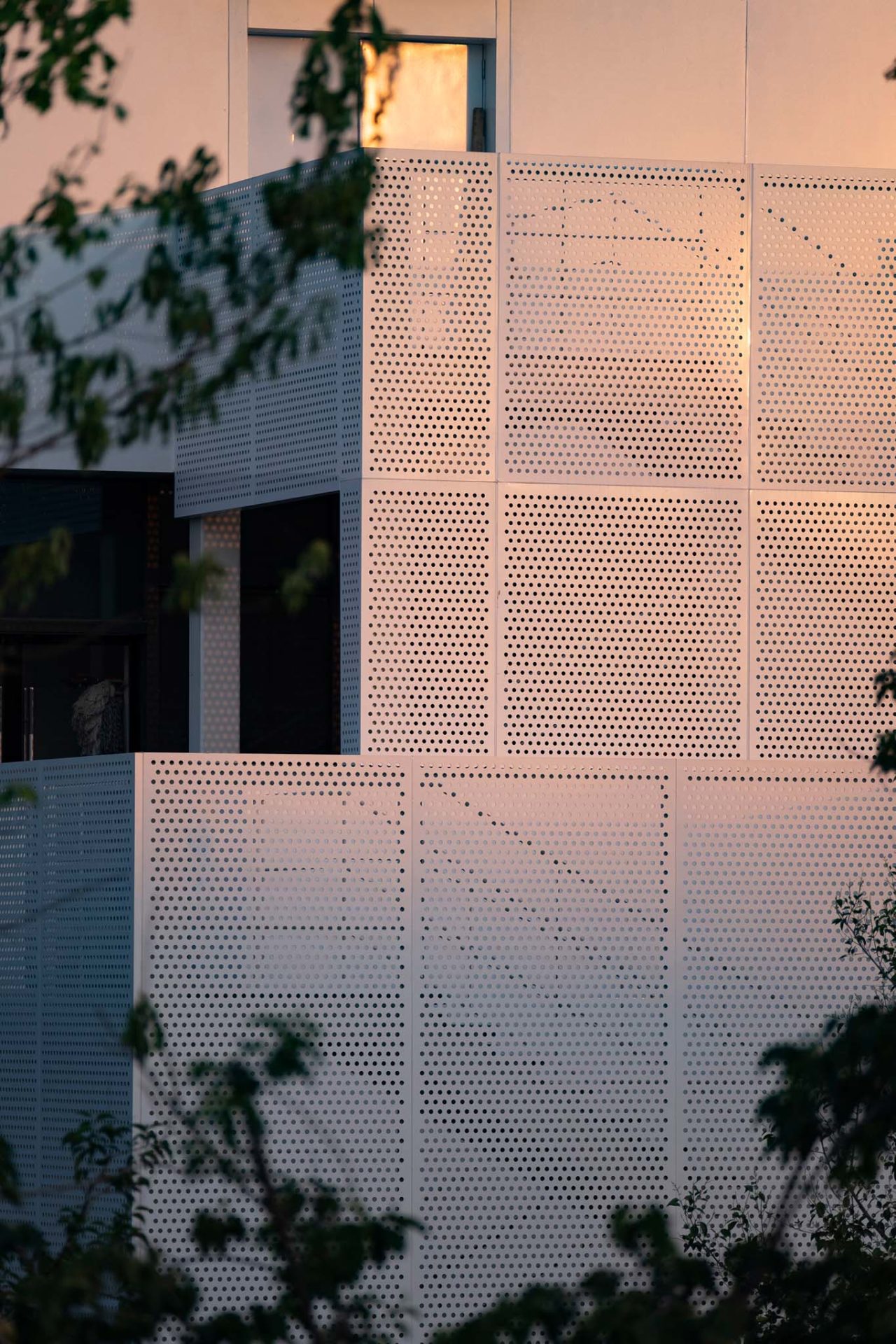
In order to avoid the 3-story height limit that would turn this “mountain” into a flat roof, we continue to use boxes on the roof to form a stepped “mountain” look. Originally, each box was a platform where guests could walk up the steps to the top, where they could look around and appreciate the beauty of the landscape. However, because of the restrictions of the “roofing platform” and “roofing without people” on the height limit, as well as the floor area and strict cost control, the boxes shaping the summit can only be turned into a pavilion. Although it is not possible to pace from the ground to the top of the hill, it is a perfect way to conceal the equipment on the roof.
The mountain of the prototype area consists of two parts, the building itself and the pavilion, including the fire stairs attached to the building. The former creates a solid volume through solid metal panels and glass, while the latter creates an imaginary form with perforated aluminum panels. The real and the imaginary complement each other to form the monument mountain of mortal life.


Monuments
“It’s a mountain, and like a cloud.” After accepting the proposal, the client commented, “It reminds people of the cloud of data.” The prototype reflects the city’s positioning “City of High Technology”. In this way, the work becomes communicative through multiple interpretations. The image created by the architecture through the interpretation and sanctification of ordinary people’s daily life is actively given the symbolic meaning of the city by the readers and becomes a double declaration of daily and monumental, a “mountain of ideal life” for ordinary people who commemorate the present and every day of the future. The Mountain of Folded Clouds.


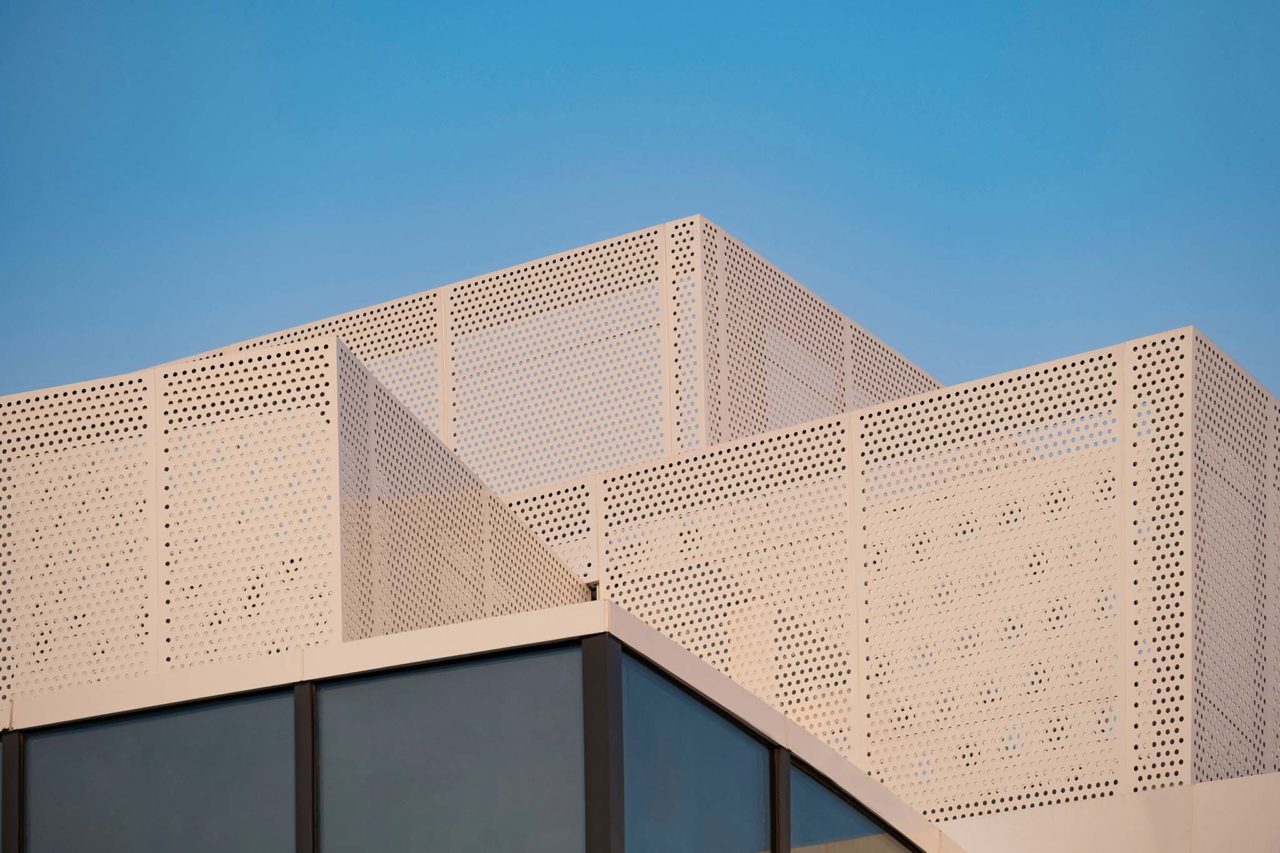


The project description is provided by the architects.
About the Architects:

Wutopia Lab
Wutopia Lab is founded by the chief architect Yu Ting in Shanghai, which is an architecture company based on a new paradigm of complex systems. Wutopia Lab regards Shanghai’s culture and lifestyle as a starting point, using architecture as a tool to promote sociological progress within building practice. Wutopia Lab focuses on humans and is dedicated to linking different aspects of urban life: traditional, daily, and cultural to interpret Urbanian lifestyle and to develop a contemporary Chinese aesthetic based on Shanghai.
